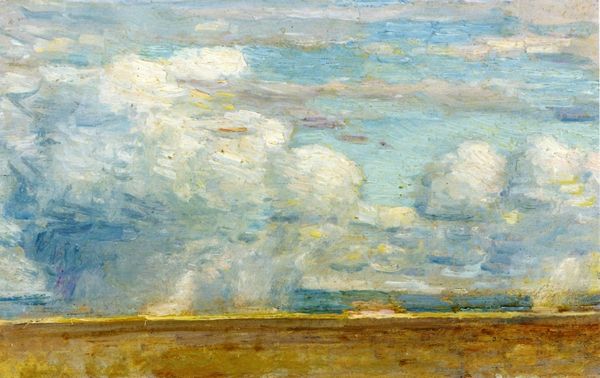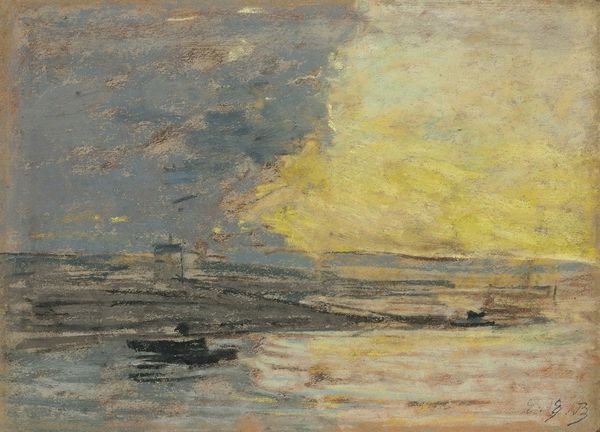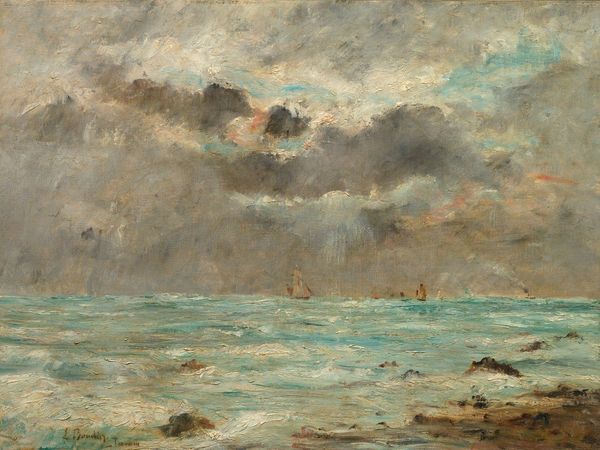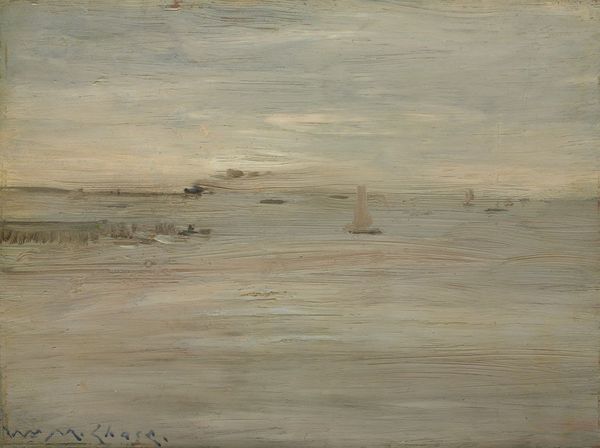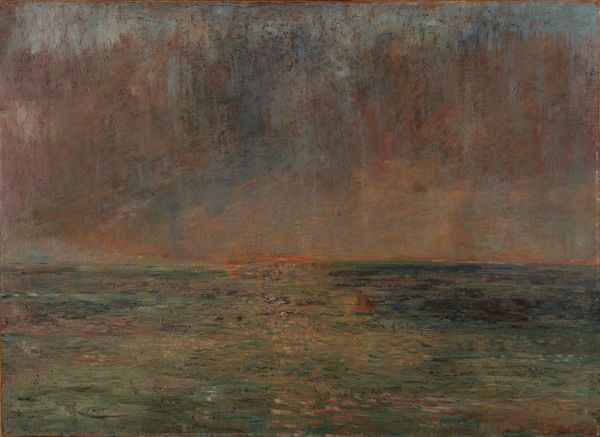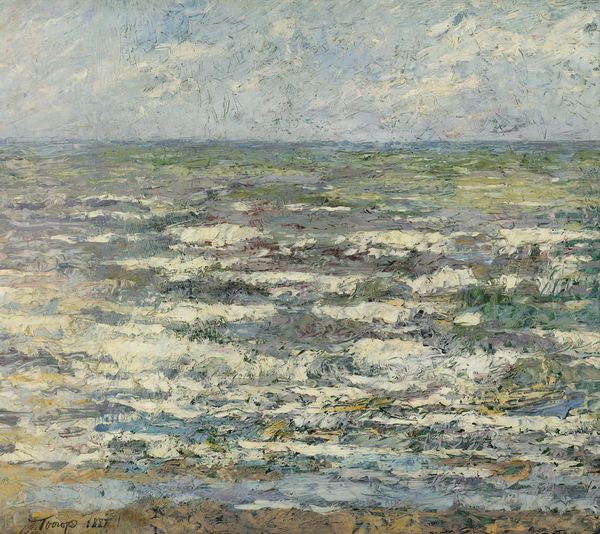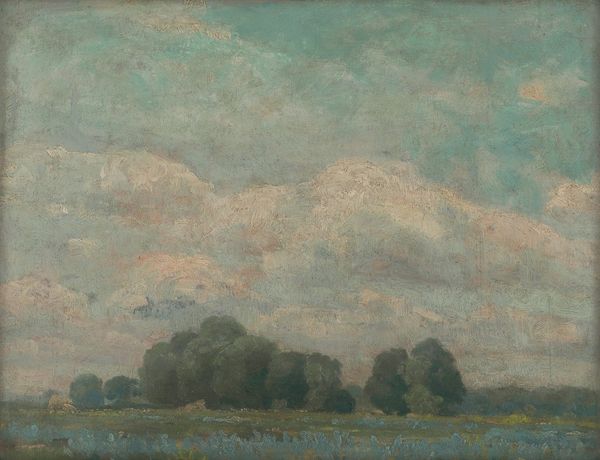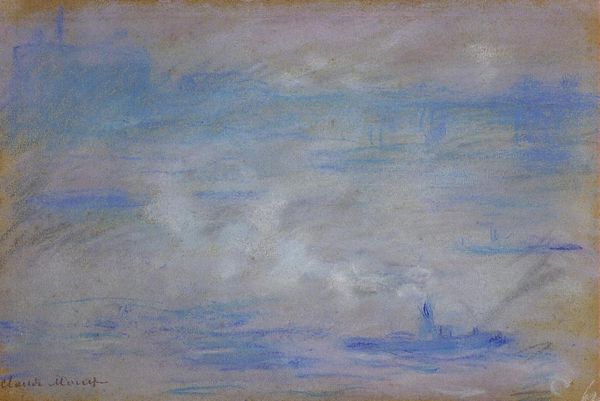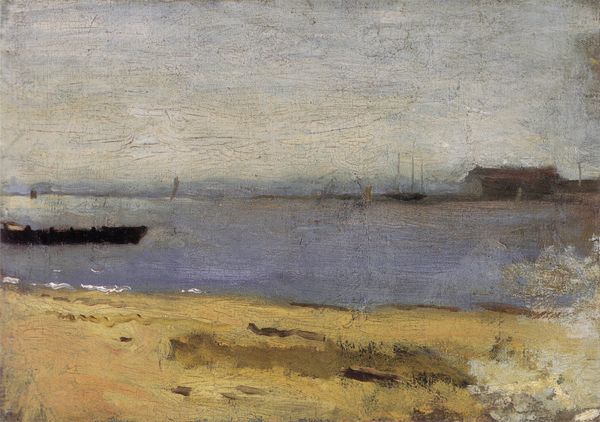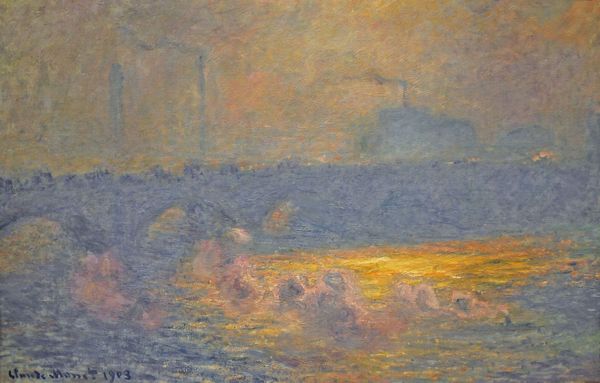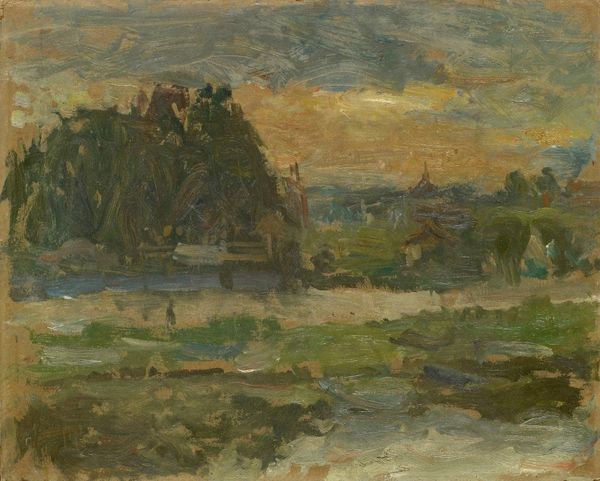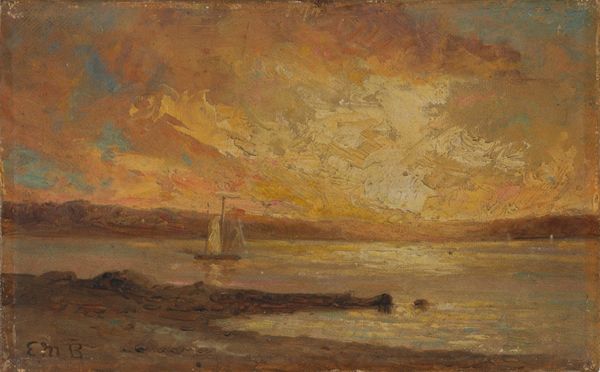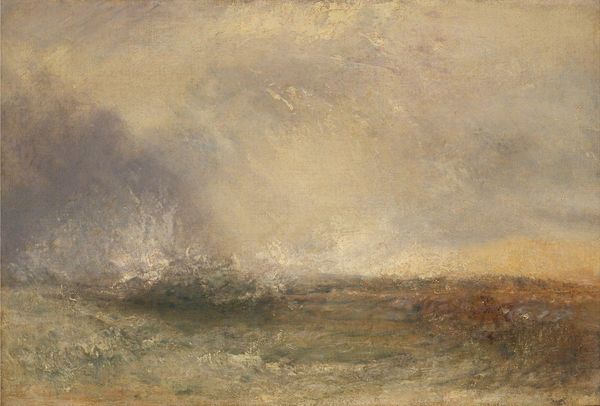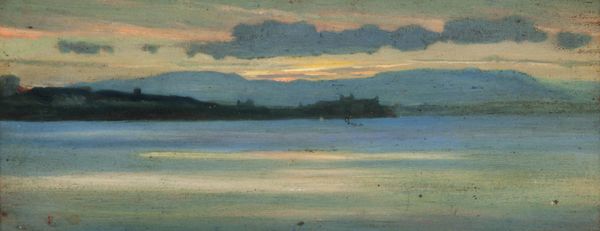
painting, plein-air, oil-paint
#
painting
#
impressionism
#
plein-air
#
oil-paint
#
landscape
#
watercolor
Copyright: Public Domain: Artvee
Editor: We’re looking at "The White Cloud" painted by James Ensor in 1884, using oil on canvas. There’s something really calming about it. The blues and greens are muted, and the cloud formation dominates the scene. What strikes you about it? Curator: The relationship between the horizontal expanse of the sea and the verticality of the clouds presents a compositional tension that arrests the eye. The surface of the water, a churning mass of muted greens and browns, finds a stark counterpoint in the ethereal blues of the sky above. Note how the impasto technique—the thick application of paint—imbues the clouds with a palpable sense of volume. It is almost sculptural in its effect. Editor: That’s a great point. I didn’t notice how textured it was until you mentioned it. Do you think the composition contributes to the overall feeling of calmness that I got from it? Curator: Calmness perhaps, but I see a calculated dissonance. Consider the relatively limited palette. Ensor constrains his colour range to emphasize tonal shifts, creating visual interest with nuances of light and shadow rather than chromatic exuberance. Does this not evoke a sense of restraint? The painting’s seeming tranquility belies a sophisticated exploration of formal elements. Editor: I see what you mean. I guess I was focusing too much on the blues and the landscape itself. Curator: It's understandable. But remember, art invites a dynamic reading that transcends superficial interpretation. Through attention to formal structure, the artwork yields further understanding of how the visual elements play with each other. Editor: That's a great point to keep in mind moving forward, I'll keep it in mind for future pieces! Curator: Indeed, every stroke holds significance in such an exquisitely rendered vista.
Comments
No comments
Be the first to comment and join the conversation on the ultimate creative platform.
